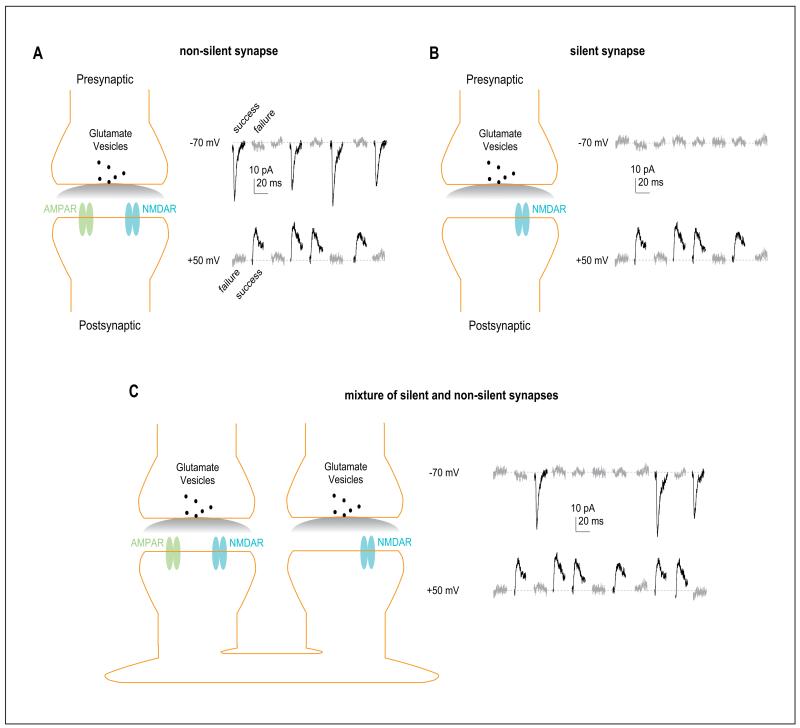Figure 1.
AMPAR-silent nascent synapses. (A) Diagram (left) showing a typical glutamatergic synapse at which both AMPARs and NMDARs are present on the postsynaptic membrane. Example EPSCs (from real recordings in the nucleus accumbens; right) showing that on presynaptic activation, small EPSCs are elicited at both depolarized and hyperpolarized membrane potentials with a similar success or failure rate. The success rate is determined by, and equal to, the release probability. (B) Diagram (left) showing an AMPAR-silent synapse at which only stable NMDARs are present on the postsynaptic membrane (AMPARs are absent). Example traces (right) showing that on presynaptic activation, no synaptic responses are evoked at hyperpolarized membrane potentials, at which the only responding glutamatergic receptors NMDARs are blocked by Mg2+. (C) Diagram (left) showing that a set of synapses, mixed with one nonsilent synapse and one silent synapse, are recorded together in one experimental setup through the minimal stimulation assay. Example traces (right) showing that at hyperpolarized membrane potentials, presynaptic releases can only elicit postsynaptic responses at nonsilent synapses, whereas at depolarized membrane potentials, presynaptic releases elicit postsynaptic responses at both silent and nonsilent synapses. Through the trials, the success rate at depolarized membrane potentials is higher than at hyperpolarized membrane potentials. In other word, the failure rate at depolarized membrane potentials is lower than at hyperpolarized membrane potentials. AMPAR = α-amino-3-hydroxy-5-methyl-4-isoxazole propionic acid receptor; EPSC = excitatory postsynaptic currents; NMDAR = N-methyl-d-aspartate receptor.

